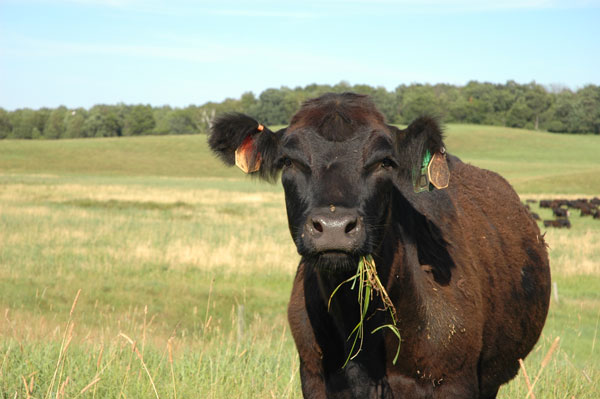When is the best time to apply fertilizer to pastures?
March 30, 2011

Every spring I get questions from producers about fertilizing their pastures with nitrogen (N), phosphorous (P) and potassium (K). Many producers coming out of winter want to give their pastures a boost or they are fertilizing crop fields and figure they might as well do their pasture while they are thinking about it. Eventually I lead the conversation to the question, "is this really the best time to fertilize pasture?"
Now, I'm not totally opposed to fertilizing pastures in the spring. Applications of P and K should be made prior to establishing a new seeding based on soil test results. A light application of N, 20-40 lbs./acre in March could be used to jump start spring growth and allow for earlier grazing. This could potentially give about two weeks of earlier grazing if environmental conditions are favorable. But the acreage covered by this N application should be limited. The spring flush is coming and most producers can't normally harvest it all with grazing animals. Why add to the amount of forage produced when you don't need it? An early application of N also can increase the potential for grass tetany and excess N in the spring may possibly increase toxins in endophyte-infected tall fescue. Generally, one acre of pasture for every two cows should be fertilized with N in early spring and never more than a third of the total pasture acreage.
All applications of K should wait until the plants can utilize it better. If we were to look at soil levels of potassium during the year, we would find that it is in greater concentration during the spring (due to mineralization of K during the winter). Plants have the ability to take up more K than they need. This is called luxury consumption, which can occur when there are high soil levels of K, like what we see in spring. High concentrations of K can affect magnesium uptake by plants. This not only affects the plant physiology but can also cause metabolic imbalances in animals that consume mainly forages. The metabolic imbalance in animals is usually referred to as grass tetany. Why apply potassium at a time when more is already available and plants can take up more than they need?
To read the entire article, link here.
You might also like:
Commercial Cattleman Builds Back His Herd Using DNA Marker Technology
What Is The Future Of Biotechnology In The Beef Industry?
You May Also Like

.png?width=300&auto=webp&quality=80&disable=upscale)

